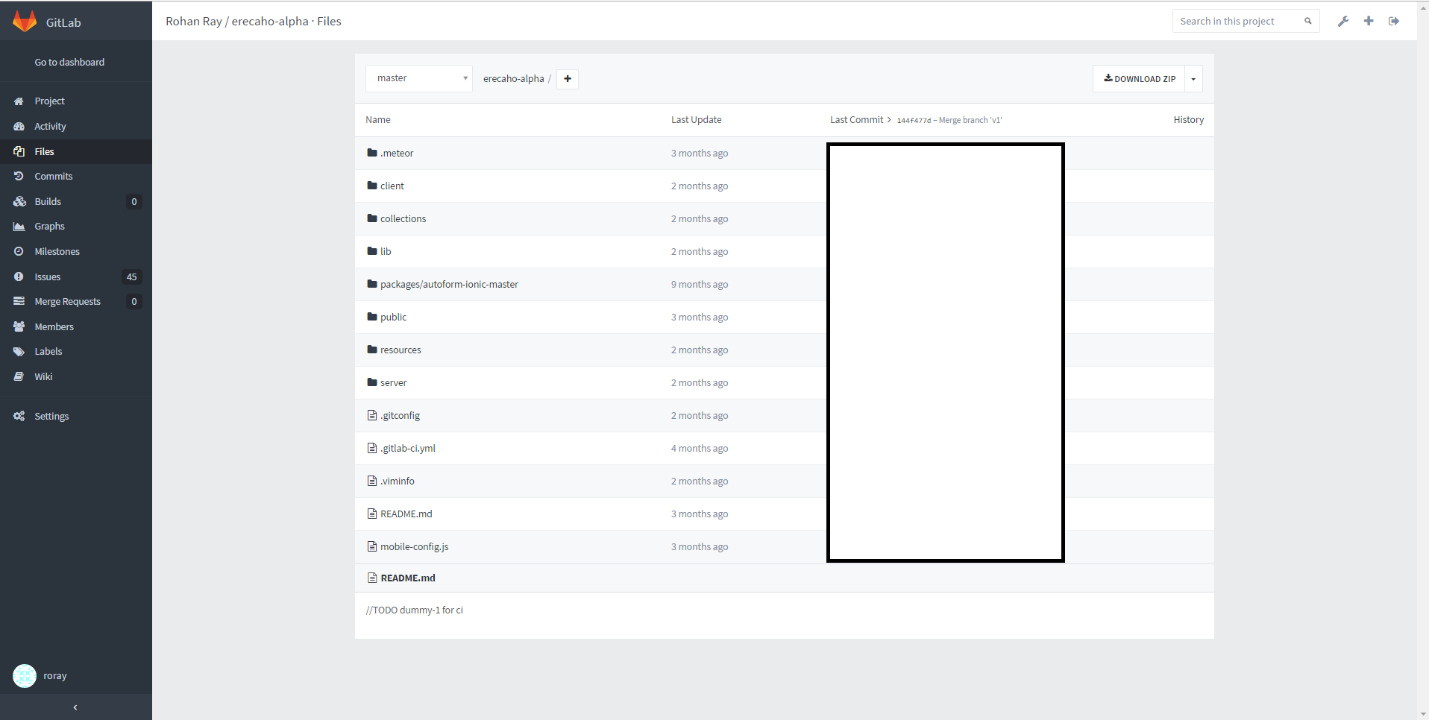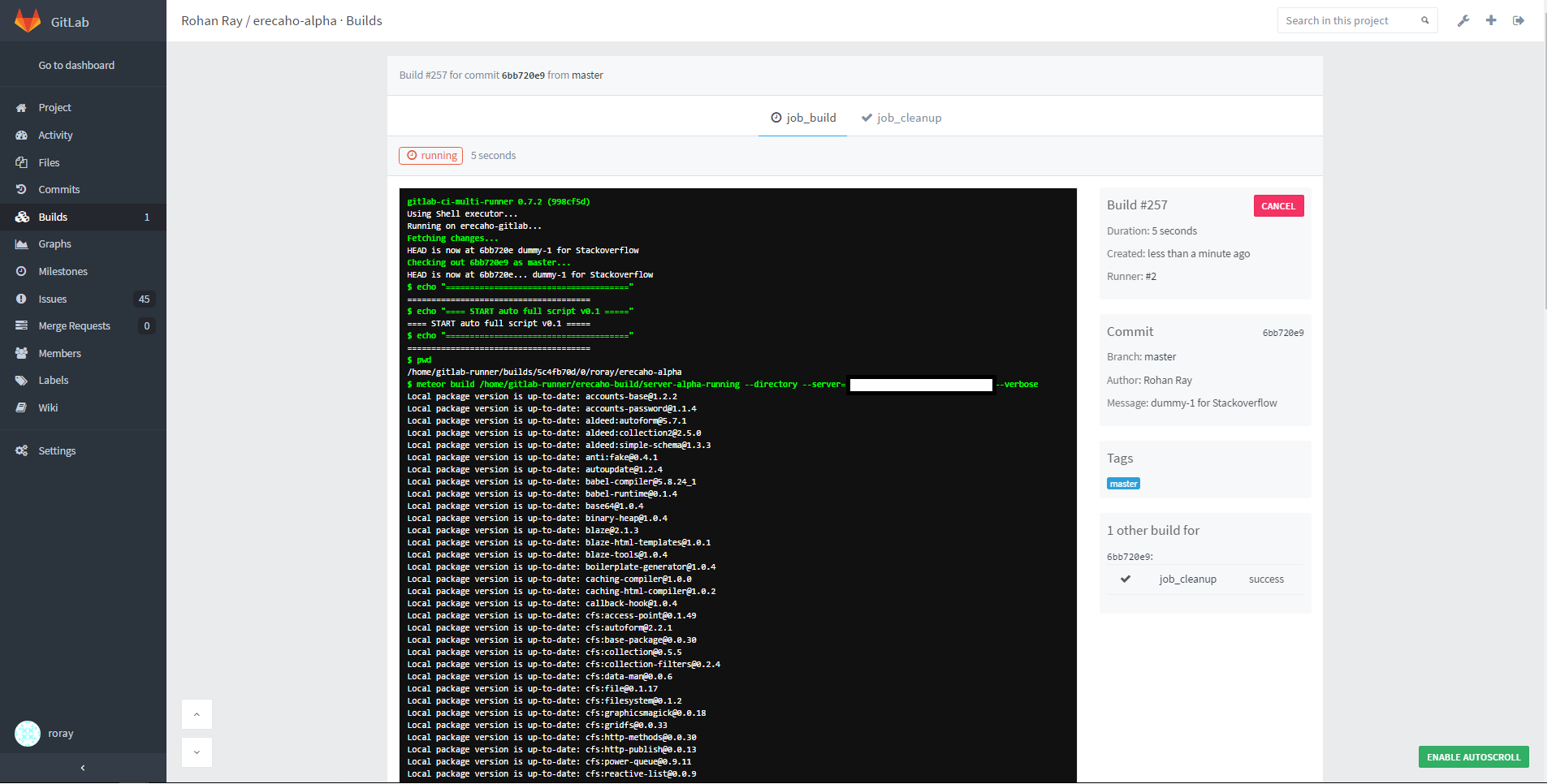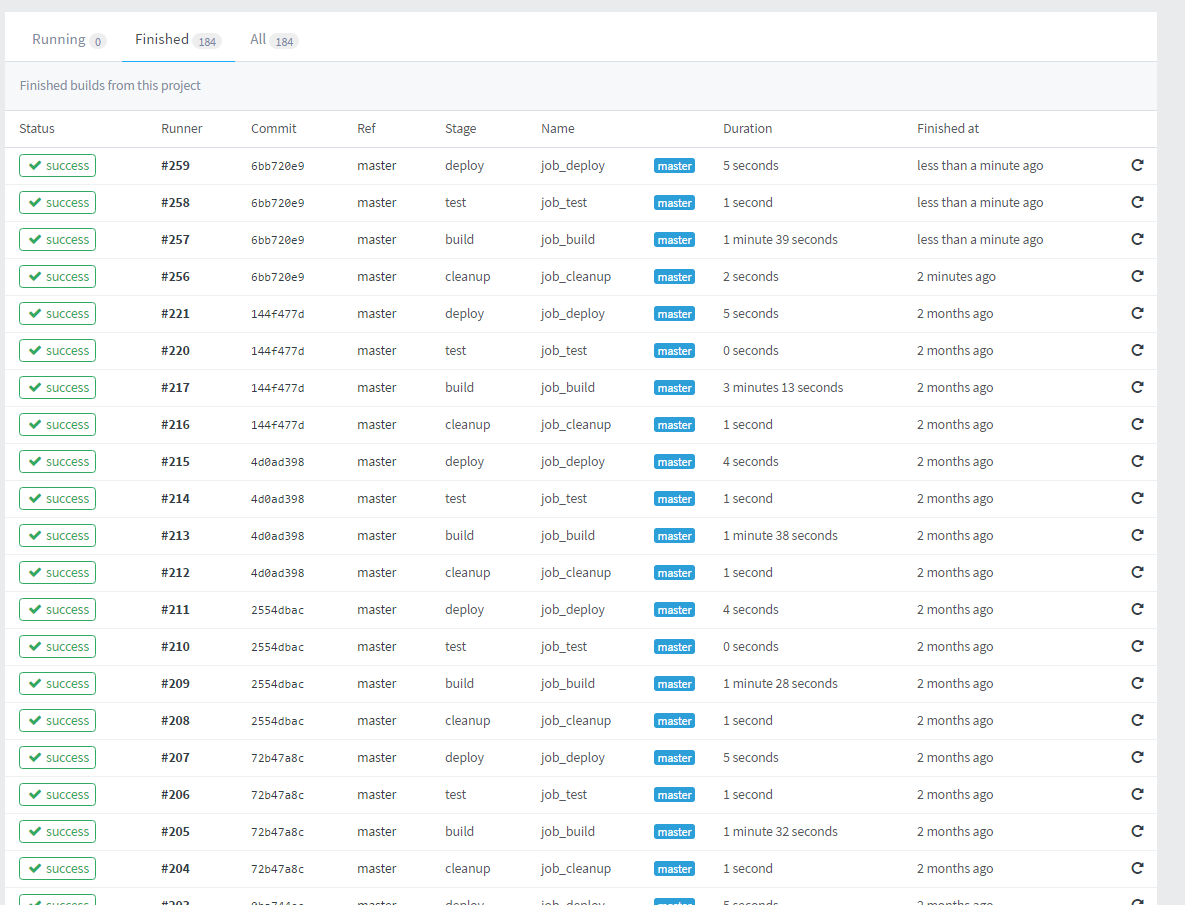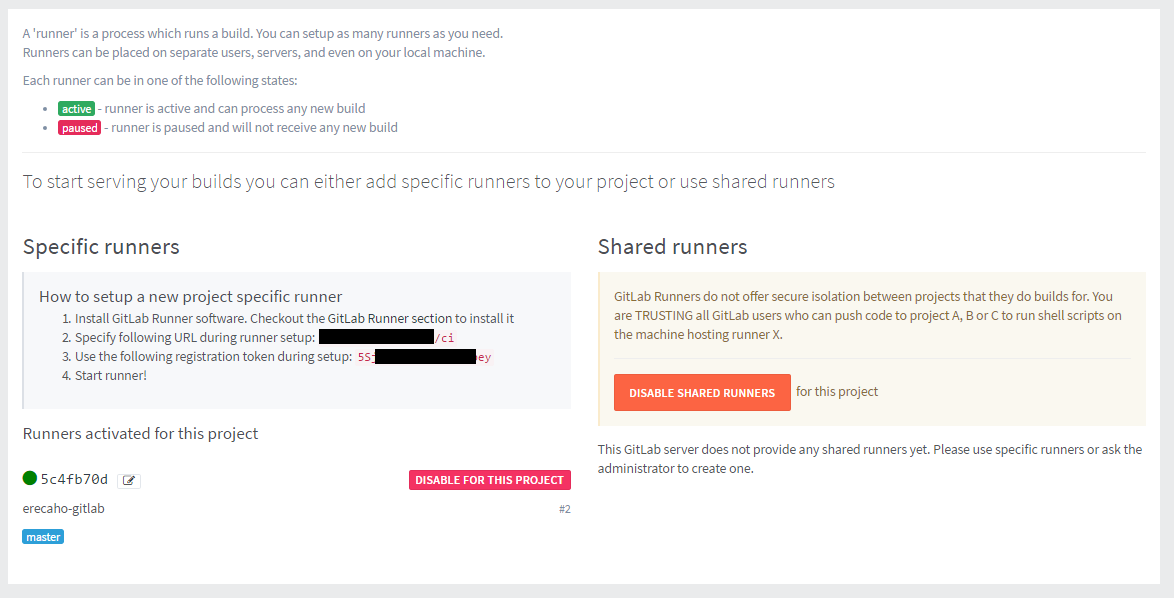Brief: I am running a Meteor 1.3.2 app, hosted on Digital Ocean (Ubuntu 14.04) since 4 months. I am using Gitlab v. 8.3.4 running on the same Digital Ocean droplet as the Meteor app. It is a 2 GB / 2 CPUs droplet ($ 20 a month). Using the built in Gitlab CI for CI/CD. This setup has been running successfully till now. (We are currently not using Docker, however this should not matter.)
Our CI/CD strategy:
- We check out Master branch on our local laptop. The branch contains the whole Meteor project as shown below:
![enter image description here]()
We use git CLI tool on Windows to connect to our Gitlab server. (for pull, push, etc. similar regular git activities)
Open the checked out project in Atom editor. We have also integrated Atom with Gitlab. This helps in quick git status/pull/push etc. within Atom editor itself. Do regular Meteor work viz. fix bugs etc.
Post testing on local laptop, we then do git push & commit on master. This triggers auto build using Gitlab CI and the results (including build logs) can be seen in Gitlab itself as shown below:
![enter image description here]()
Below image shows all previous build logs:
![enter image description here]()
Please follow below steps:
Install meteor on the DO droplet.
Install Gitlab on DO (using 1-click deploy if possible) or manual installation. Ensure you are installing Gitlab v. 8.3.4 or newer version. I had done a DO one-click deploy on my droplet.
Start the gitlab server & log into gitlab from browser. Open your project and go to project settings -> Runners from left menu
![enter image description here]()
SSH to your DO server & configure a new upstart service on the droplet as root:
vi /etc/init/meteor-service.conf
Sample file:
#upstart service file at /etc/init/meteor-service.conf
description "Meteor.js (NodeJS) application for eaxmple.com:3000"
author "[email protected]"
# When to start the service
start on runlevel [2345]
# When to stop the service
stop on shutdown
# Automatically restart process if crashed
respawn
respawn limit 10 5
script
export PORT=3000
# this allows Meteor to figure out correct IP address of visitors
export HTTP_FORWARDED_COUNT=1
export MONGO_URL=mongodb://xxxxxx:[email protected]:59672/meteor-db
export ROOT_URL=http://<droplet_ip>:3000
exec /home/gitlab-runner/.meteor/packages/meteor-tool/1.1.10/mt-os.linux.x86_64/dev_bundle/bin/node /home/gitlab-runner/erecaho-build/server-alpha-running/bundle/main.js >> /home/gitlab-runner/erecaho-build/server-alpha-running/meteor.log
end script
Install gitlab-ci-multi-runner from here: https://gitlab.com/gitlab-org/gitlab-ci-multi-runner/blob/master/docs/install/linux-repository.md as per the instructions
Cheatsheet:
curl -L https://packages.gitlab.com/install/repositories/runner/gitlab-ci-multi-runner/script.deb.sh | sudo bash
sudo apt-get install gitlab-ci-multi-runner
sudo gitlab-ci-multi-runner register
Enter details from step 2
Now the new runner should be green or activate the runner if required
Create .gitlab-ci.yml within the meteor project directory
Sample file:
before_script:
- echo "======================================"
- echo "==== START auto full script v0.1 ====="
- echo "======================================"
types:
- cleanup
- build
- test
- deploy
job_cleanup:
type: cleanup
script:
- cd /home/gitlab-runner/erecaho-build
- echo "cleaning up existing bundle folder"
- echo "cleaning up current server-running folder"
- rm -fr ./server-alpha-running
- mkdir ./server-alpha-running
only:
- master
tags:
- master
job_build:
type: build
script:
- pwd
- meteor build /home/gitlab-runner/erecaho-build/server-alpha-running --directory --server=http://example.org:3000 --verbose
only:
- master
tags:
- master
job_test:
type: test
script:
- echo "testing ----"
- cd /home/gitlab-runner/erecaho-build/server-alpha-running/bundle
- ls -la main.js
only:
- master
tags:
- master
job_deploy:
type: deploy
script:
- echo "deploying ----"
- cd /home/gitlab-runner/erecaho-build/server-alpha-running/bundle/programs/server/ && /home/gitlab-runner/.meteor/packages/meteor-tool/1.1.10/mt-os.linux.x86_64/dev_bundle/bin/npm install
- cd ../..
- sudo restart meteor-service
- sudo status meteor-service
only:
- master
tags:
- master
Check in above file in gitlab. This should trigger Gitlab CI and after the build process is complete, the new app will be available @ example.net:3000
Note: The app will not be available after checking in .gitlab-ci.yml for the first time, since restart meteor-service will result in service not found. Manually run sudo start meteor-service once on DO SSH console. Post this any new check-in to gitlab master will trigger auto CI/CD and the new version of the app will be available on example.com:3000 after the build is completed successfully.
P.S.: gitlab ci yaml docs can be found at http://doc.gitlab.com/ee/ci/yaml/README.html for your customization and to understand the sample yaml file above.
For docker specific runner, please refer https://gitlab.com/gitlab-org/gitlab-ci-multi-runner




